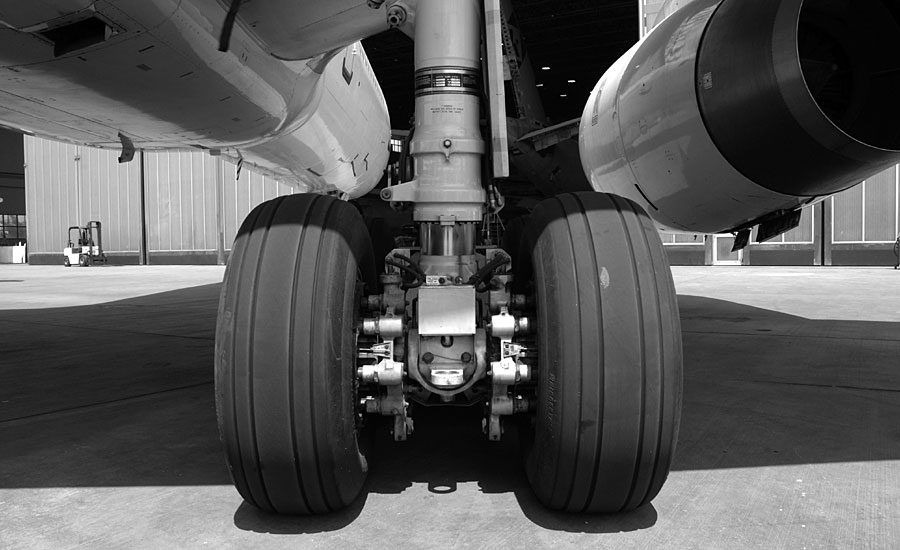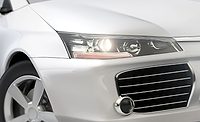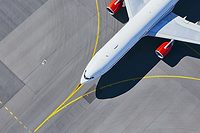Aerospace Industry Increasingly Turns to PVD Coatings to Replace Hard Chrome




The search for a suitable replacement to hard chrome on aerospace components has been a key supply chain priority for aircraft manufacturers. This is because of the documented health risks to workers and the impact on the environment from exposure to hexavalent chromium, a carcinogen that occurs during the chrome plating process and the most toxic form of chromium.
As a result, chromium is a highly regulated chemical in major markets worldwide. In the European Union, hexavalent chromium falls under the domain of the EU regulation, REACH (Registration, Evaluation, Authorisation and Restriction of Chemicals), which establishes guidelines for the safe use of chemicals throughout the supply chain. Chromium is also closely regulated in the United States by OSHA.
However, replacing hard chrome with a suitable alternative remains a significant challenge for the aerospace industry because of its widespread use as a surface coating on many components. Long prized for its hardness, ability to minimize sliding wear, corrosion protection and for extending the life of metal parts, it can be found on many applications such as aero structures, landing gears, engine mounts and air frames. In many cases, it is used on components where there is metal-to-metal contact between moving parts due to its low coefficient of friction.
As a result, the process of replacing hard chrome requires aerospace companies to critically evaluate why they used hard chrome in the first place and to identify what problems it was addressing as they now seek to replace it with an alternative. This is a huge undertaking as each part that currently uses hard chrome needs to be reviewed for its functionality, its connectivity to other parts, wear mechanisms, lubrication needs, and environmental operating conditions. This analysis is necessary as there is no exact replacement for hard chrome.
There is also an opportunity to achieve superior performance as replacements to hard chrome are evaluated. Despite its widespread adoption, hard chrome was not without its performance issues, which include limits to its hardness and corrosion protection, difficulties with applications in recesses and threads, and the risk of pitting and spalling (flaking) under high stress conditions.
PVD Coatings
One alternative that is increasingly being utilized in the aerospace industry are PVD coatings, a strong non-hazardous, REACH-conforming replacement option to hard chrome. Physical vapor deposition (PVD) coatings offer many of the same benefits and, in some ways, is superior to hard chrome.
PVD describes a variety of vacuum deposition methods that can be used to produce thin coatings. PVD is typically used to coat components at relatively low coating temperatures of 160-500 °C. These temperatures are ideal because they are below the tempering temperature of steels so as to avoid altering the fundamental material properties.
Among the PVD options are several carbon-based coatings available that provide a unique combination of extreme surface hardness, low friction coefficient and anti-corrosion properties. One example, BALINIT C from coatings provider Oerlikon Balzers, has attracted the attention of some of the largest aerospace manufacturers in the world, including Airbus.
In November, Airbus announced it was expanding the use of BALINIT C to include copper alloys – a substrate commonly used for bearings and bushings in aircraft landing gear and its connectivity to an air frame. Previously, Airbus had approved the PVD coating for use on steel, titanium and Inconel substrates.
The technical qualification of BALINIT C, as a non-hazardous and REACH-conforming option to hard chrome plating, completes the Airbus Industrial Qualification Process for production centres at Oerlikon Balzers UK and Oerlikon Balzers France.
“Airbus has confirmed that our BALINIT C coating meets their technical and industrial requirements,” said Oerlikon Balzers Global Aerospace Segment Manager Toby Middlemiss.
Oerlikon Balzers uses a mixture of metal and diamond-like carbon to create BALINIT C, a tungsten carbide/carbon (WC/C) coating. The coating applies to a thickness of 1 to 5 microns enabling its use on roller bearings and landing gear parts. It creates a bright finish and with the uniformity of this coating, the need for post-finishing is eliminated saving time and money. This is a distinct advantage over hard chrome, which needs to be ground back to tolerances and polished to achieve a uniform finish.
BALINIT C offers a stronger adhesion to metal substrates than hard chrome, a high load bearing capacity, and a high level of resistance to scuffing (adhesive wear) and because of its low friction coefficient; it reduces pitting and fretting corrosion on sliding or moving parts on an aircraft such as those found in actuators, flap track systems and pumps. This makes the coating ideal for low lubrication and even dry running applications.
Bearings are another component that suffer from severe and disproportionately distributed abrasive wear. The coating is particularly suitable for case-hardening as well as ball- and roller-bearing steels because it can be applied at temperatures below 200 °C.
The coating can be applied not only to inner and outer races and cylinders but also to the balls in ball bearings in a highly uniform coating thickness of 0.5-1 μm. The slight increase in roughness is offset by the good burnishing qualities of the coating, which smoothes the raceway of the inner and outer rings, providing additional protection against scuffing and pitting.
With the increasing adoption of PVD coatings by industry leaders such as Airbus, the opportunity to eventually eliminate hard chrome entirely from the aerospace industry is becoming more certain.
“It has been a big task for the aerospace industry to replace hard chrome because it isn’t as easy to find an exact replacement – every alternative will be a bit different,” says Middlemiss. “So, manufacturers have had to go back to the drawing board and evaluate why hard chrome was used in the first place, what the application is and what the suitable alternatives are that might work.”
“It will continue to take a rigorous, evidence-based evaluation surface-by-surface, component-by-component to ensure that safety, performance, reliability and cost criteria are all addressed,” adds Middlemiss. “
For more information about PVD coating solutions for components with Oerlikon Balzers, email balzers.components@oerlikon.com or visit www.oerlikon.com/balzers.
By Oerlikon Balzers
Looking for a reprint of this article?
From high-res PDFs to custom plaques, order your copy today!









